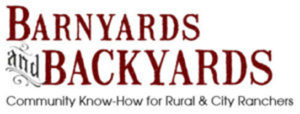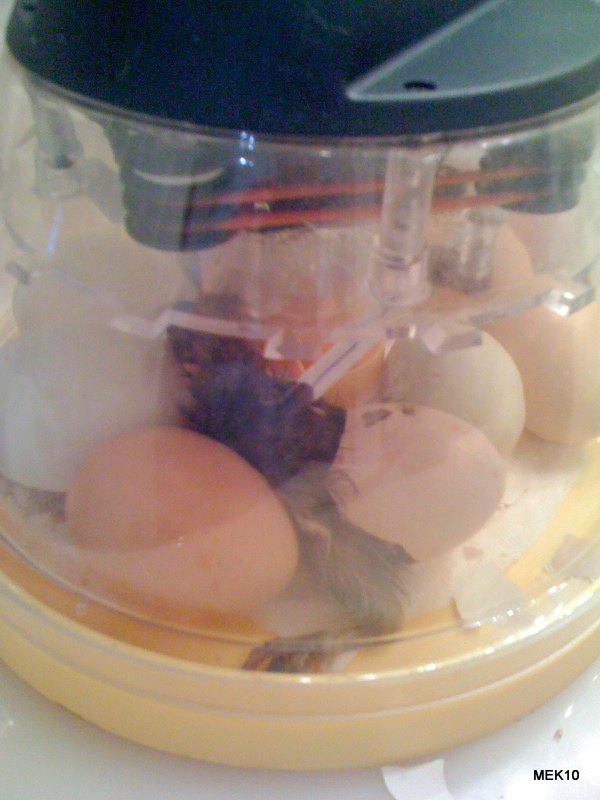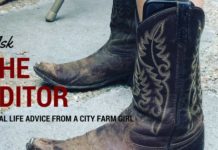 The campaign for strict hen-rights rules has won out in California. Starting in 2015, cages will have to be large enough for the birds to stand up, lie down and spread their wings without touching each other or the sides of the cage. California voters adopted these rules for in-state egg producers two years ago. Last week, Governor Arnold Schwarzenegger signed a law that extended the rules to out-of-state producers who want to sell their eggs in California.
The campaign for strict hen-rights rules has won out in California. Starting in 2015, cages will have to be large enough for the birds to stand up, lie down and spread their wings without touching each other or the sides of the cage. California voters adopted these rules for in-state egg producers two years ago. Last week, Governor Arnold Schwarzenegger signed a law that extended the rules to out-of-state producers who want to sell their eggs in California.
Personally, although I applaud the movement toward the prevention of cruelty in egg producing hens, it simply isn’t enough for the betterment of the hen’s life. But I don’t want to criticize any progress on the farm-animal rights movement. Perhaps is a small step, but I hope it isn’t the only and last step in making conditions better for the food-producing animals of our nation. At least, what is driving the animal-rights movement today is a surprisingly strong level of popular support. When California’s egg referendum was on the ballot in 2008, it won in a landslide, taking more than 63% of the vote.
In the meantime, animal-rights activists have also been targeting foie gras in recent years because it is made by force-feeding ducks and geese in a way that is unnatural and cruel. So far, the state of California has banned force-feeding to create foie gras, and Hawaii is currently considering banning the sale of the delicacy. Also, Governor Ted Strickland of Ohio – a major farm state – brokered a deal between the Farm Bureau and the Humane Society. In exchange for the farm group’s commitment to work toward a list of tough new animal-rights laws – including phasing out a particularly harsh kind of crate for pregnant sows and banning the strangulation of pigs and cows – the Humane Society is holding back on its plans to put an anticruelty referendum on the ballot this November.
Hopefully, more states will take on California’s new law for the betterment of the life of an egg-laying hen. I try to keep up hope for these small steps, but when I look at the years and years it takes for a small law change such as increasing the cage sizes, I feel disheartened. Egg-laying hens need to be taken OUT of the cages. And seriously, more and more people need to keep their own chickens and take the responsibility of their egg source into their own hands and deal with the hens themselves. Large factory farms exist because we as a nation have moved from our willingness to take control of our sustenence.
More and more laws that require animals that produce or become food to be treated decently while they are alive need to be put into effect, quickly. While those of us who can stop supporting ANYTHING that is a large scale producing farm need to produce our own eggs or buy them from people who raising their chickens sustainably and conciously.
MORE INFORMATION: Animal Rights: New Laws Take Movement to the Mainstream












I recently saw a multiple-episode documentary on the Sundance Channel about an English chef/restauranteur who wanted to conduct an experiment about chickens. (I believe his first name was Hugh and the last name was a hyphenated one. I will have to do some research.) Although he personally eats poultry and serves it at his restaurant, he was curious about the phenomenon of “cheap chicken” in England (he often refers to a popular deal in grocery stores there – “two for fiver” meaning two chickens for 5 pounds.) As a chef, he was positive this kind of poultry couldn’t taste as good as that raised more naturally so he set out to find out if this were the case. He set up a chicken house with two sections – one following the national guidelines for factory-farmed chickens and the other permitting chickens access to a grass yard. The number of chickens housed on each side was the same. It was astonishing to see, as the episodes progressed, how many chickens died on the conventional side vs. the outdoor side. The chef had a mentor from the chicken industry show him the standard procedures including the culling of the flock. I was heart broken when the chef actually wept as he was “forced” to kill chickens day after day simply because they didn’t meet the “standard.” As someone who has rescued and rehabilitated a chicken who had fallen from a poultry producer’s truck, I could not imagine having to do such a thing! An additional experiment involved giving chickens to a group of residents in low-income housing to raise. They built the coop and the yard themselves and took care of the chickens day after day. These same people, who once only thought about the cost of their next chicken meal, came to think of chickens in a whole new way once they cared for them. It was extremely enlightening, hard to watch at times, but something I think anyone interested in animal welfare or even someone who eats chicken and wants to do so in an informed way should see. I will try to find the name of the show and the chef and post it here as it was such valuable viewing.
Found it. Hugh Fearnley-Whittingstall and the show was called “Hugh’s Chicken Run” when aired on BBC’s Channel 4 but I’m not sure what it was called when aired in the US.
HFW (short version) is more than just a chef in fact he is a cook who started a smalll holding in Devon Uk and inspred me to start on the road to self sufficiency (although not to spelling well) look up “river cottage” on you tube to see what he is about.